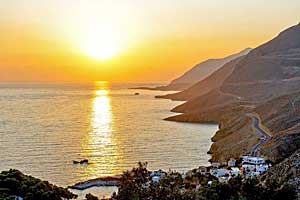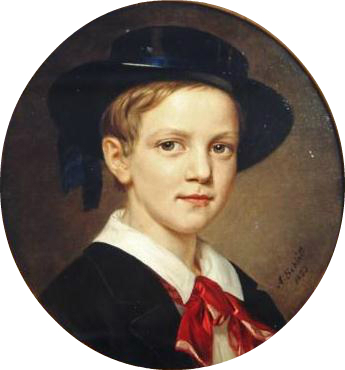|
Theriso Revolt
The Theriso revolt ( el, Επανάσταση του Θερίσου) was an insurrection that broke out in March 1905 against the government of Crete, then an autonomous state under Ottoman suzerainty. The revolt was led by the Cretan politician Eleftherios Venizelos, and is named after his mother's native village, Theriso, the focal point of the revolt. The revolt stemmed from the dispute between Venizelos and the island's ruler, Prince George of Greece, over the island's future, particularly over the question of Cretan union with Greece. The conflict's origin can be traced to 1901, when Prince George dismissed Venizelos from the government. The hostility between Venizelos and the prince was precipitated by the latter's attitude toward foreign relations and by his refusal to engage in dialogue with his advisers over the island's internal affairs. After a prolonged political struggle, Venizelos and his followers decided upon an armed uprising, with the goals of uniting Crete with ... [...More Info...] [...Related Items...] OR: [Wikipedia] [Google] [Baidu] |
Eleftherios Venizelos
Eleftherios Kyriakou Venizelos ( el, Ελευθέριος Κυριάκου Βενιζέλος, translit=Elefthérios Kyriákou Venizélos, ; – 18 March 1936) was a Greek statesman and a prominent leader of the Greek national liberation movement. He is noted for his contribution to the expansion of Greece and promotion of liberal-democratic policies.Kitromilides, 2006, p. 178"Liberty Still Rules" '''', 18 February 1924. As leader of the , he held office as |
Prime Minister Of Greece
The prime minister of the Hellenic Republic ( el, Πρωθυπουργός της Ελληνικής Δημοκρατίας, Prothypourgós tis Ellinikís Dimokratías), colloquially referred to as the prime minister of Greece ( el, Πρωθυπουργός της Ελλάδας, Prothypourgós tis Elládas), is the head of government of the Hellenic Republic and the leader of the Greek Cabinet. The incumbent prime minister is Kyriakos Mitsotakis, who took office on 8 July 2019 from Alexis Tsipras. The officeholder's official seat (but not residence) is the Maximos Mansion in the centre of Athens. The office is described in the Constitution either as Prime Minister or President of the Government (Πρόεδρος της Κυβερνήσεως). This is the reason why the prime minister is also addressed as "Mr/Madam President". Election and appointment of the prime minister The prime minister is officially appointed by the president of Greece. According to Article 37 of t ... [...More Info...] [...Related Items...] OR: [Wikipedia] [Google] [Baidu] |
Kydonia
Kydonia or Cydonia (; grc, Κυδωνία; lat, Cydonia) was an ancient city-state on the northwest coast of the island of Crete. It is at the site of the modern-day Greek city of Chania. In legend Cydonia was founded by King Cydon (), a son of Hermes or Apollo and of Akakallis, the daughter of King Minos. According to Pausanias he was son of king Tegeates. Diodorus Siculus mentions that the city was founded by King Minos. The editors of the ''Barrington Atlas of the Greek and Roman World'' suggest that the city also bore the name Apollonia ( grc, Ἀπολλωνία). Prehistoric period The name of the city is first mentioned in Linear B tablets from Knossos (ku-do-ni-ja). At Kastelli hill, which is the citadel of Chania's harbor, archaeological excavations have discovered ceramic sherds, which date back to Neolithic era. Scarce finds such as walls and ground floors confirm that the systematic habitation of the hill began during Early Minoan (EM) II period. A Minoan Ho ... [...More Info...] [...Related Items...] OR: [Wikipedia] [Google] [Baidu] |
Greek War Of Independence
The Greek War of Independence, also known as the Greek Revolution or the Greek Revolution of 1821, was a successful war of independence by Greek revolutionaries against the Ottoman Empire between 1821 and 1829. The Greeks were later assisted by the British Empire, Bourbon Restoration in France, Kingdom of France, and the Russian Empire, while the Ottomans were aided by their North African vassals, particularly the eyalet of Egypt Eyalet, Egypt. The war led to the formation of modern Greece. The revolution is Celebration of the Greek Revolution, celebrated by Greeks around the world as Greek Independence Day, independence day on 25 March. Greece, with the exception of the Ionian Islands, came under Ottoman rule in the 15th century, in the decades before and after the fall of Constantinople. During the following centuries, there were sporadic but unsuccessful Ottoman Greece#Uprisings before 1821, Greek uprisings against Ottoman rule. In 1814, a secret organization called Filiki Et ... [...More Info...] [...Related Items...] OR: [Wikipedia] [Google] [Baidu] |
Sfakia
Sfakiá ( el, Σφακιά) is a mountainous area in the southwestern part of the island of Crete, in the Chania regional unit. It is considered to be one of the few places in Greece that have never been fully occupied by foreign powers. With a 2011 census population of 1,889 inhabitants living on a land area of , Sfakia is one of the largest and least densely populated municipalities on the island of Crete. The etymology of its name is disputed. According to the prevailing theory, it relates to its rugged terrain, deriving from the ancient Greek word ''σφαξ'', meaning land chasm or gorge. Description The road from Chania to Sfakiá crosses the island from north to south, through the village of Vryses. From this village the route crosses the White Mountains ( Lefká Óri) to Hóra Sfakíon () by the Libyan Sea. Halfway from Vrisses to Hóra Sfakíon is the fertile plateau of Askifou, surrounded by high mountain peaks. From here to Hóra Sfakíon the road is particularly s ... [...More Info...] [...Related Items...] OR: [Wikipedia] [Google] [Baidu] |
Lefka Ori
Lefka Ori ( el, Λευκά Όρη, meaning 'White Mountains') or Madares ( from the Cretan Greek meaning 'without coverage, bald, bare of any vegetation for high mountain areas') is a mountain range located in Western Crete, in the Chania prefecture. The White Mountains or Lefka Ori occupy a large part of the centre of West Crete and are the main feature of the region. They consist mainly of limestone, from light grey to bluish or black color. The White Mountains have taken their name from the perpetual white or off-white color of their peaks as the off white of limestone during the summer and fall interchanges with the snow that covers the peaks until late in spring. The highest summit is Pachnes at and there are over 30 summits that are over high. The Lefka Ori also have about 50 gorges, the most famous being the Samaria Gorge. Another characteristic of the mountain range is that there are a number of plateaus that exist at heights of , such at those of Askifou, Impros, Kallik ... [...More Info...] [...Related Items...] OR: [Wikipedia] [Google] [Baidu] |
Enosis
''Enosis'' ( el, Ένωσις, , "union") is the movement of various Greek communities that live outside Greece for incorporation of the regions that they inhabit into the Greek state. The idea is related to the Megali Idea, an irredentist concept of a Greek state that dominated Greek politics following the creation of modern Greece in 1830. The Megali Idea called for the annexation of all ethnic Greek lands, parts of which had participated in the Greek War of Independence in the 1820s but were unsuccessful and so remained under foreign rule. A widely known example of ''enosis'' is the movement within Greek Cypriots for a union of Cyprus with Greece. The idea of ''enosis'' in British-ruled Cyprus became associated with the campaign for Cypriot self-determination, especially among the island's Greek Cypriot majority. However, many Turkish Cypriots opposed ''enosis'' without '' taksim'', the partitioning of the island between Greek Cypriots and Turkish Cypriots. In 1960, the Repu ... [...More Info...] [...Related Items...] OR: [Wikipedia] [Google] [Baidu] |
Cretan Revolt (1897–1898)
The Cretan Revolt of 1897–1898 was a successful insurrection by the Greek population of Crete against the rule of the Ottoman Empire. The insurrectionists initially received supplies and armed support from the Kingdom of Greece and later also from the Great Powers (United Kingdom, France, Italy, Austria-Hungary, Germany and Russia). The insurrection was the culmination of several failed insurrections during the earlier part of the 19th century. After the outbreak of hostilities, several European powers attempted to mediate the conflict, blockage Crete and stop the combat on the Island. Conflict ended in 1898 when the insurgents and the Ottoman Empire agreed on a formula presented by the European powers that created an autonomous Crete under the authority of Prince George of Greece that still recognized Ottoman sovereignty. Background Previous revolts The conquest of Crete by the Ottoman Empire ended in 1669 with the capture of Candia. Crete then became an Ottoman province ... [...More Info...] [...Related Items...] OR: [Wikipedia] [Google] [Baidu] |
Chania
Chania ( el, Χανιά ; vec, La Canea), also spelled Hania, is a city in Greece and the capital of the Chania regional unit. It lies along the north west coast of the island Crete, about west of Rethymno and west of Heraklion. The municipality has 108,642 inhabitants (2011). This consists of the city of Chania and several nearby areas, including Kounoupidiana (pop. 8,620), Mournies (pop. 7,614), Souda (pop. 6,418), Nerokouros (pop. 5,531), Daratsos (pop. 4,732), Perivolia (pop. 3,986), Galatas (pop. 3,166) and Aroni (pop. 3,003). History Early history Chania is the site of the Minoan settlement the Greeks called Kydonia, the source of the word quince. It appears on Linear B as ''ku-do-ni-ja''. Some notable archaeological evidence for the existence of this Minoan city below some parts of today's Chania was found by excavations in the district of Kasteli in the Old Town. This area appears to have been inhabited since the Neolithic era. The city reemerged after the end ... [...More Info...] [...Related Items...] OR: [Wikipedia] [Google] [Baidu] |
Athens
Athens ( ; el, Αθήνα, Athína ; grc, Ἀθῆναι, Athênai (pl.) ) is both the capital and largest city of Greece. With a population close to four million, it is also the seventh largest city in the European Union. Athens dominates and is the capital of the Attica region and is one of the world's oldest cities, with its recorded history spanning over 3,400 years and its earliest human presence beginning somewhere between the 11th and 7th millennia BC. Classical Athens was a powerful city-state. It was a centre for the arts, learning and philosophy, and the home of Plato's Academy and Aristotle's Lyceum. It is widely referred to as the cradle of Western civilization and the birthplace of democracy, largely because of its cultural and political influence on the European continent—particularly Ancient Rome. In modern times, Athens is a large cosmopolitan metropolis and central to economic, financial, industrial, maritime, political and cultural life in Gre ... [...More Info...] [...Related Items...] OR: [Wikipedia] [Google] [Baidu] |
George I Of Greece
George I ( Greek: Γεώργιος Α΄, ''Geórgios I''; 24 December 1845 – 18 March 1913) was King of Greece from 30 March 1863 until his assassination in 1913. Originally a Danish prince, he was born in Copenhagen, and seemed destined for a career in the Royal Danish Navy. He was only 17 years old when he was elected king by the Greek National Assembly, which had deposed the unpopular Otto. His nomination was both suggested and supported by the Great Powers: the United Kingdom of Great Britain and Ireland, the Second French Empire and the Russian Empire. He married Grand Duchess Olga Constantinovna of Russia in 1867, and became the first monarch of a new Greek dynasty. Two of his sisters, Alexandra and Dagmar, married into the British and Russian royal families. Edward VII of the United Kingdom and Alexander III of Russia were his brothers-in-law, and George V of the United Kingdom, Christian X of Denmark, Haakon VII of Norway, and Nicholas II of Russia were his nephew ... [...More Info...] [...Related Items...] OR: [Wikipedia] [Google] [Baidu] |






